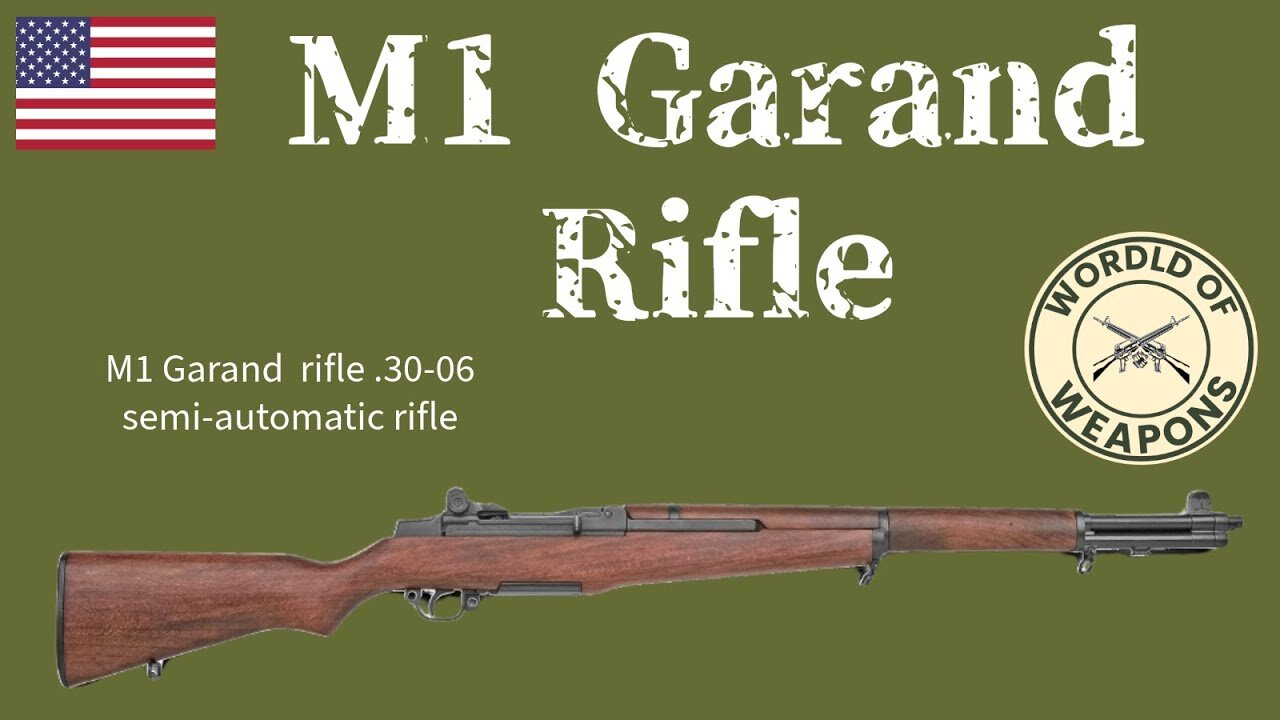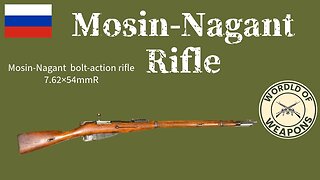Premium Only Content

M1 Garand Rifle 🇺🇸 The Rifle that won the Second World War
M1 Garand rifle .30-06 semi-automatic rifle
Introduction 00:00
Technical Description 03:30
After the Second World War 06:35
Introduction:
The story of the M1 Garand Is that of the first semi-automatic rifle ever widely adopted as a standard military arm. It began soon after the start of the First World War, when inventor John C. Garand (a Canadian, then living in the USA) began to develop a semi-automatic (or self-loading) rifle. He worked at the US Government owned Springfield Armory during the 1920’s and early 1930’s developing several different models.
Garand’s early prototypes were built using the somewhat rare system of advanced primer ignition (API) blowback, but for various reasons this system was overly sensitive and therefore unsuitable for a military rifle. He switched to the more common gas-operated system. Garand filed a patent for his semiautomatic, gas operated, clip-fed rifle in 1930, and received a US patent for his design late in 1932.
This rifle was built around the then-experimental .276 caliber (7mm) Pedersen cartridge. At the same time, his rifle was tested by the US Military against its main competitor, the Pedersen rifle, and was eventually recommended for adoption by the US Army early in 1932.
US general MacArthur however, made a statement that the US Military should stick to the old .30-06 cartridge. Foreseeing this turn of events, Garand already had a variation of his design chambered for this caliber. Finally, on the 6th January, 1936, Garand’s rifle was adopted by the US Army as ‘Rifle, .30 Caliber, M1’. Early issue rifles showed quite poor characteristics however, jamming way too often for a decent military arm. A lot of noise was made that eventually reached the ears of the US Congress. In 1939, a major redesign was ordered. Garand quickly redesigned the gas port system, which greatly improved the reliability of the new weapon. Almost all M1 rifles of early issue were quickly rebuilt to adopt a new gas system, so very few ‘original’ M1 Garand rifles survive to the present day – now extremely expensive collectors’ items.
When the USA entered second World War, mass production of the M1 rifle began at the Springfield armory and at the Winchester plant. During the war, both companies produced between them approximately 4 million M1 rifles, so the M1 Garand is the most widely used semi-automatic rifle of Second World War by far.
Technical Description:
The M1 Garand is a gas operated, magazine fed, semiautomatic rifle. Original M1’s used the gas tapped from the muzzle by a special muzzle extension (Gas trap operation). This was proven unreliable though, and since 1939, M1 rifles were built with a system using a gas port, drilled in the barrel near the muzzle similarly to modern assault rifles. The tapped gas was directed into the gas cylinder, located under the barrel, where it operated a long-stroke gas piston, integral with the operating rod.
The long operating rod houses inside it a return spring and ends with the extension that carries a bolt operating groove at the left and a charging handle at the right. The groove connects with the rotating bolt, located inside the receiver. The bolt has two locking lugs that lock into the receiver walls.
When the gun was fired, hot powder gases were led to the gas chamber and to the gas piston, that drove back the operating rod. The bolt operating groove interacting with the stud on the bolt, rotated the bolt to unlock it and then retracted it to commence the reloading cycle.
The M1 was fed from an integral box magazine, which was probably the weakest point of the whole design. The magazine was fed using only 8-round clips, which could not be easily “topped off”, staying inside the magazine until all 8 rounds were shot. As soon as the magazine (and clip) became empty, the bolt was stopped at its rearward position by the bolt catch, and the empty clip was automatically ejected from the magazine with a distinctive ‘ping’ sound. The main drawback of the system was that the clips could not be easily reloaded during action, and enemies close by could hear when the rifle was empty.
It was possible to refill the clip in the rifle, but this was not the fastest procedure.
The M1 featured a wooden stock with separate handguards and a steel buttplate. The forwardmost part of the muzzle served as a bayonet mounting point. Sights on the M1 consisted of the front sight with dual protecting ‘wings’, dovetailed into the gas block at the muzzle. The adjustable peephole rear sights were built into the rear part of the receiver.
-
 5:00
5:00
World Of Weapons
1 year agoMosin Nagant Rifle 🇷🇺 A Legend of Military History
102 -
 LIVE
LIVE
Precision Rifle Network
3 hours agoS4E25 Guns & Grub - Rex Is Back, I shot the 6.5PRC finally...
15 watching -
 LIVE
LIVE
rhywyn
46 minutes agoうつ
10 watching -
 LIVE
LIVE
RyuMuramasa✧
2 hours agoNEW Everdark Sovereign | Elden Ring Nightreign | LIVE Playthrough
32 watching -
 1:17:04
1:17:04
Nikko Ortiz
9 hours agoLive - News, Politics, Podcast And Naaah Im Playin We Chillen
1.99K -
 1:26:13
1:26:13
Mally_Mouse
4 hours agoLet's Hang!! -- P.O. Box & Chill!
9.71K -
 1:02:37
1:02:37
BonginoReport
5 hours agoKamala Teases Book About Dumpster Fire Campaign - Nightly Scroll w/ Hayley Caronia (Ep.102)
61.1K42 -
 35:05
35:05
Stephen Gardner
5 hours ago🔥Obama will be FORCED to Testify in Trump trial?
21.7K34 -
 9:08
9:08
Tundra Tactical
2 hours agoTundra Tactical Political Memes Review!
16.5K -
 LIVE
LIVE
GloryJean
2 hours agoDuos w/ Spartakus 🔥 LOCK IN for Games w/ PASSION
35 watching